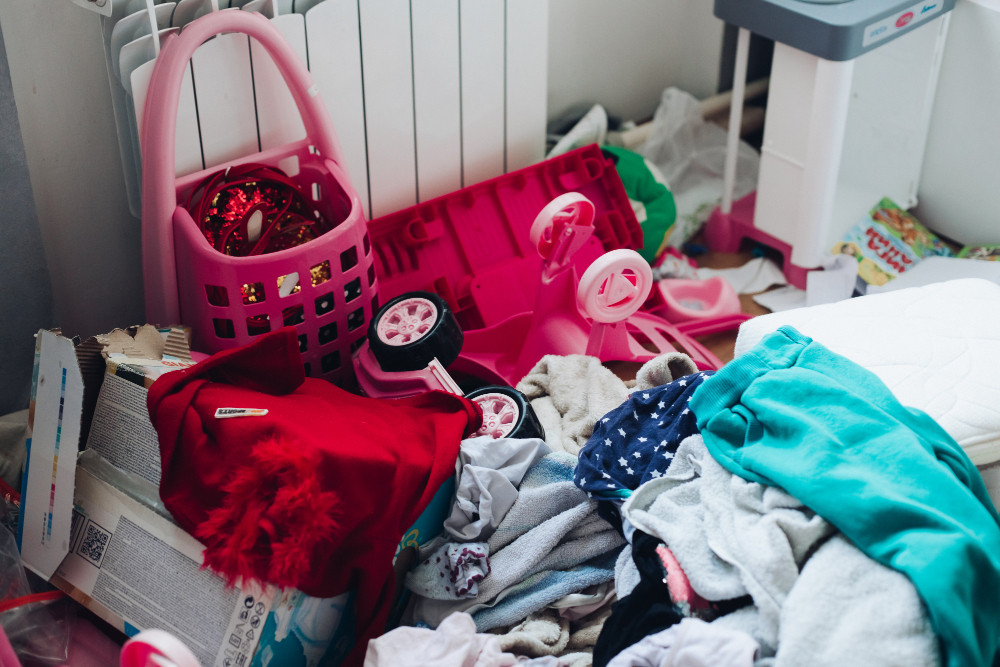Pernahkah Anda menjumpai seseorang yang gemar mengumpulkan berbagai macam barang? Selain banyak mengumpulkan barang, mereka sulit membuang barang yang sudah tidak bermanfaat, sehingga barang-barang tersebut ditimbun dalam satu ruangan hingga penuh. Mereka juga memiliki anggapan bahwa barang tersebut mungkin akan memiliki manfaat di kemudian hari.
Jika ya, maka seseorang tersebut mengalami hoarding disorder, yaitu perilaku menimbun barang yang tidak berharga sampai menjadi timbunan dan memengaruhi kualitas hidup.
Apa Itu Perilaku Menimbun (Hoarding Disorder)?
Kegemaran untuk menimbun banyak barang baik yang sudah tidak bisa dipakai, tidak bermanfaat atau tidak memiliki nilai berharga, dikenal dengan istilah hoarding disorder. Mereka bisa mengalami stres ketika mencoba untuk membuang barang-barang tersebut. Banyak orang melakukan penimbunan barang dengan alasan bahwa barang tersebut mungkin akan berguna di kemudian hari, atau merasa bahwa benda-benda tersebut memiliki nilai sejarah dan sentimental yang tinggi.
Barang yang ditimbun umumnya sangat beragam mulai dari majalah atau koran bekas, pakaian, alat rumah tangga, tas plastik, dan barang-barang lainnya yang sudah rusak dan tidak bisa digunakan. Terkadang, orang yang gemar menimbun bukan hanya senang mengumpulkan barang-barang saja namun juga benda hidup seperti binatang peliharaan. Namun, binatang peliharaan tersebut biasanya tidak akan mendapat perawatan yang layak.
Baca Juga: Mengenal Body Dismorphic Disorder, Gangguan Mental yang Memicu Kecanduan Operasi Plastik
Perbedaan Menimbun Barang dengan Koleksi
Kebiasaan menimbun berbeda dengan kegiatan mengumpulkan barang seperti yang dilakukan para kolektor. Para kolektor biasanya akan memajang dan menata barang-barang koleksinya dengan rapi dan diletakkan di tempat yang aman.
Sedangkan pada penimbun barang, mereka umumnya membeli barang secara impulsif tanpa rencana khusus sebelumnya. Mereka juga hanya menyimpan di tempat yang seadanya dan bukan berada di tempat khusus. Biasanya, para penimbun barang hanya akan menumpuk barang-barang secara berantakan sehingga sulit untuk diambil.
Apakah Perilaku Menimbun Termasuk Gangguan Kesehatan Mental?
Dilansir dari Cleveland Clinic, perilaku menimbun merupakan gangguan mental yang dapat didiagnosis dan ditangani melalui serangkaian terapi yang tepat. Perilaku ini merupakan masalah yang perlu mendapat perhatian serius jika:
- Jumlah barang yang ditimbun sudah sangat mengganggu kehidupan sehari-hari. Dalam artian tumpukan barang-barang tersebut membuat seseorang tidak dapat lagi mengakses tempat tidur atau ruangan lainnya dengan layak.
- Tumpukan barang tersebut secara signifikan memengaruhi kualitas hidup diri sendiri dan anggota keluarga lainnya
Timbunan barang ini bisa berada di mana-mana dan membuat mereka tidak mempunyai ruang kosong di rumah. Rumah yang seharusnya menjadi tempat bernaung bisa menjadi tempat yang tidak sehat dan tidak aman untuk ditinggali.
Perilaku menimbun termasuk salah satu masalah mental yang sulit untuk ditangani. Pasalnya, orang yang memiliki kondisi ini sering kali tidak melihat bahwa perilakunya merupakan masalah bagi sendiri dan orang lain. Beberapa orang yang menyadari adanya masalah tersebut namun ragu-ragu untuk mencari bantuan karena mereka merasa malu, bersalah atau bahkan terhina karenanya.
Baca Juga: Tanda-Tanda Jika Anak Kecanduan Main Game Online
Penyebab dan Gejala Seseorang Senang Menimbun Barang
Dilansir dari NHS, belum diketahui dengan pasti penyebab seseorang menimbun barang. Hal ini dapat berkaitan dengan berbagai faktor atau kondisi lainnya. Misalnya, seseorang ingin mengenang peristiwa atau kenang-kenangan dari sosok orang lain atau peristiwa berharga dalam hidupnya sehingga memilih untuk menyimpan berbagai barang yang memiliki nilai emosional.
Dalam banyak kasus, peristiwa stres dan traumatis seperti kematian juga dapat memicu seseorang melakukan penimbunan. Orang dengan gangguan penimbunan memiliki kebutuhan kuat untuk menyimpan dan menyelamatkan benda-benda mereka.
Tanda dari seseorang yang gemar menimbun barang antara lain:
- Berat untuk menyingkirkan barang-barang
- Mengalami stres ekstrem saat mencoba membuang barang
- Khawatir akan membutuhkan barang-barang timbunan di masa depan
- Tidak tahu di mana harus meletakkan barang
- Tidak membolehkan orang lain menyentuh barang yang ditimbun
- Tinggal di ruangan yang tidak bisa digunakan optimal karena tumpukan barang
- Menarik diri dari teman dan keluarga
Kebiasaan menimbun barang merupakan masalah mental yang bukan hanya mengganggu diri sendiri namun juga orang lain. Apabila Anda mendapati orang lain atau diri sendiri memiliki kecenderungan menjadi penimbun barang maka sebaiknya segera periksakan ke dokter.
Mau tahu tips dan trik kesehatan, pertolongan pertama, dan home remedies lainnya? Cek di sini, ya!
- dr Hanifa Rahma
NHS. Hoarding Disorder. Available from: https://www.nhs.uk/mental-health/conditions/hoarding-disorder/.
Cleveland Clinic. Hoarding Disorder. Available from: https://my.clevelandclinic.org/health/diseases/17682-hoarding-disorder.
Mayo Clinic. Hoarding Disorder. Available from: https://www.mayoclinic.org/diseases-conditions/hoarding-disorder/symptoms-causes/syc-20356056.
American Psychiatric Association. Available from: https://www.psychiatry.org/patients-families/hoarding-disorder/what-is-hoarding-disorder.












